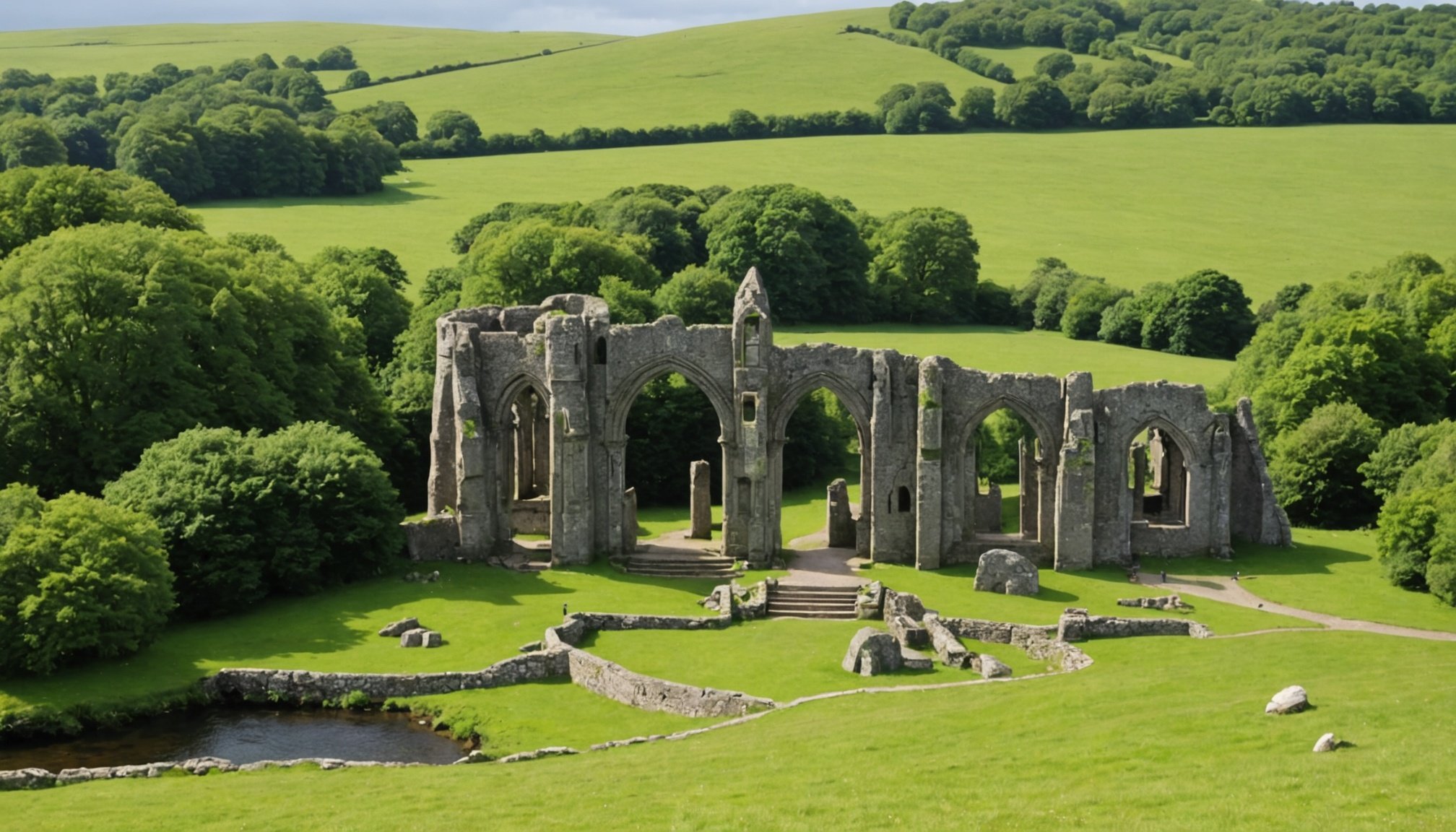Overview of Celtic Sanctuaries
Celtic sanctuaries hold a profound historical significance, embodying the spiritual and communal heart of ancient Celtic societies. These sites were often situated in areas of natural beauty, serving as focal points for ritual activities and gatherings. The impact of such sanctuaries extends to present-day cultural heritage, influencing modern perceptions of British history.
Definition and Importance
In essence, Celtic sanctuaries were sacred places for worship and rituals, integral to the social and cultural fabric of Celtic tribes. Not merely spiritual centers, these sites reflected societal structures, with their rituals often linked to seasonal cycles and agricultural practices.
Also read : Discover the Most Immersive UK Cruises Exploring the Rich History of the English Civil War
Key Celtic Sites
Exploring the historical significance further, specific Celtic sites such as Stonehenge, Avebury, and Anglesey stand out. These places offer invaluable insights into ancient Celtic life. Each site is a testament to the engineering prowess and spiritual richness of the Celts.
Cultural Impact
The cultural heritage of these sanctuaries is evident in UK destinations, where the reverence for landscapes and ancient structures continues to resonate. Modern festivals and traditions often draw on these rich Celtic legacies, showcasing their enduring influence on British culture.
Have you seen this : Discover the UK”s Most Enriching Cruises That Dive Deep into the History of British Royalty
Recommended Cruise Routes
When it comes to cruise itineraries, selecting a maritime route that showcases Celtic sanctuaries can be an enriching experience. One popular path includes exploring the British Isles, which offers access to historic sites like Scotland’s Iona Abbey or Ireland’s Skellig Michael. Maritime routes around the Irish Sea are also popular, providing unique vistas of ancient stoneworks and scenic coastlines.
Choosing the Best Cruise Line
Travel planning is essential when picking a cruise line that prioritises historical exploration. Uncovering Celtic history requires a cruise that offers well-organised excursions and knowledgeable guides. Many cruise lines now focus on providing experiences that connect travellers with the region’s rich history, ensuring you won’t miss iconic landmarks.
Timing and Seasonal Factors
Consider the timing of your travel. Celtic regions are best visited during late spring or early autumn when the weather is milder and the landscapes more vibrant. Cruise itineraries during these seasons can also mean fewer crowds and more personalised experiences. High summer season, on the other hand, may lead to overcrowded sites, impacting the intimacy of your visit. Thus, strategic planning is crucial to make the most of your maritime journey.
Must-Visit Celtic Sanctuaries
Exploring Celtic landmarks offers a unique journey through time. These historical landmarks are some of the most captivating travel destinations in the world. Dive into their rich past and experience their cultural significance.
Tintagel Castle
Set dramatically on the rugged coastline of Cornwall, Tintagel Castle is steeped in Arthurian legend. Many believe it to be the birthplace of King Arthur, a tale that intrigues history enthusiasts and curious travelers alike. Visitors can wander through the ruins, relishing the breathtaking views and mystical atmosphere. Activities include walking trails along clifftops and exploring the Merlin’s Cave. To integrate Tintagel into your cruise itinerary, consider disembarking at Falmouth or Plymouth for a seamless excursion.
Iona Abbey
Iona Abbey on the Isle of Iona holds immense spiritual significance, often viewed as a pilgrimage site. Cruises often offer guided tours that encompass the serene beauty and historic depth of this sacred place. When planning a visit, consider mobility options for easier access, such as shuttle services available for cruise travelers, ensuring a stress-free experience.
The Ring of Brodgar
A UNESCO World Heritage site in the heart of Orkney, the Ring of Brodgar is a mysterious prehistoric structure. Visitors can engage in guided tours to gain insight into its cultural relevance and historical context. To make the most of your visit during a cruise, review tidal schedules and embarkation points for an optimized experience.
Cultural Experiences Along Your Journey
Embrace the allure of local culture as you navigate through each stop on your journey. Engaging wholeheartedly with local traditions not only enriches the experience but also unveils the authentic spirit of each destination. Participate in community festivals or traditional gatherings, where you can connect with locals and embrace their unique ways of life.
Amidst these cultural immersions, don’t miss out on the culinary adventures that await. The Celtic influence on local gastronomy offers a treasure trove of flavours. From savoury stews to traditional baked goods, indulge in gastronomic delights that narrate tales of old-world charm. Each dish provides an insight into the region’s history and lifestyle, offering a true taste of tradition.
For those keen to maximize their cultural journey, consider these recommendations to enhance your cruise experience:
- Attend a local cooking class to learn the art of crafting traditional dishes.
- Explore local markets where vendors offer fresh, indigenous ingredients.
- Participate in artisan workshops to create a tangible memento of your trip.
These experiences not only deepen your understanding of the locale but also generate memories that last long after the journey ends.
Practical Travel Tips for Cruising
When it comes to cruise planning, getting the logistics right is key. Start by considering essential packing tips for the UK’s unpredictable climate. A reliable rain jacket, layered clothing, and comfortable shoes are must-haves. Packing versatile essentials will keep you prepared for both chilly breezes and unexpectedly sunny days.
Understanding port logistics can significantly ease your travel experience. Research transportation options from the airport to the cruise terminal in advance. Shuttle services, taxis, and local transport networks are often available. Pre-booking can save time and alleviate stress on the day of departure. Be aware that port facilities may vary, so checking their amenities beforehand can be beneficial.
Planning excursions and activities before your cruise is crucial. Many popular attractions may require reservations, so securing spots early can avoid disappointment. Whether you are interested in historical tours, water sports, or local cuisine, having pre-planned activities ensures a more structured and enriching experience. Look out for onboard planners who often offer inside knowledge about the best excursions.
By focusing on these travel tips, cruise travelers can look forward to a smoother, more enjoyable journey, free from last-minute hiccups.
Enhancing Engagement Through Visual Elements
Incorporating visual content, such as maps and images, is crucial in creating engaging itineraries that captivate and inform travellers. These elements provide clarity, helping individuals understand the layout and navigate their journey more effectively. For instance, maps can highlight key locations, transport links, and distances, giving travellers a comprehensive overview of their trip.
Digital tools offer innovative solutions for itinerary planning. By utilising platforms that allow for the integration of visual content, such as Google Maps and interactive travel applications, users can create tailored itineraries that are both informative and visually appealing. These tools enable the inclusion of itineraries, ensuring every detail is covered and easily accessible at a glance.
Photography plays a significant role in enhancing travel experiences through visual storytelling. Capturing destinations’ unique moments and landscapes allows travellers to anticipate the highlights of their journey. Sharing these images within an itinerary can spark excitement and provide a sneak peek into the visual delights that await, creating a more immersive experience.
Engagement is further enhanced by using creative visual content, inviting travellers to explore and immerse themselves in the adventure ahead. With the right combination of maps, itineraries, and photographs, travel planning becomes not just a logistical task, but a narrative-driven exploration.










